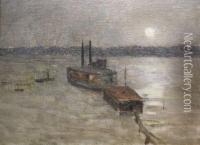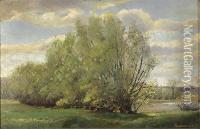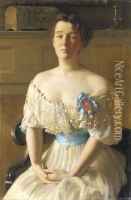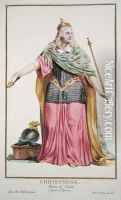Edward Emerson Simmons Paintings
Edward Emerson Simmons was an American Impressionist painter and muralist, born on October 27, 1852, in Concord, Massachusetts. He was part of a generation of artists who were beginning to explore Impressionism and its effects on light and color. Simmons attended the Massachusetts Institute of Technology before pursuing his artistic training at the Boston Museum School, and later, at the École des Beaux-Arts in Paris under the tutelage of Léon Bonnat.
Simmons' early work consisted of portraits and genre scenes. However, he is perhaps best known for his murals, which he started to produce in the late 1880s. His murals are characterized by a fluid use of color and an ability to infuse his classical subjects with vitality and a sense of modern life. Some of his most notable mural works include those at the Library of Congress, the Massachusetts State House, and the Court House in Saint Paul, Minnesota.
Throughout his career, Simmons was involved with several artist colonies, including the Cornish Art Colony in New Hampshire. He was also a member of the National Academy of Design and the American Academy of Arts and Letters. His work was awarded multiple times, and he received a silver medal at the Paris Exposition of 1900.
Simmons' style evolved over time, reflecting the changing tastes and artistic movements of the period. While he began with more traditional and academic training, his later works incorporated the lighter palette and brushwork of Impressionism, showing his adaptability and willingness to experiment with new artistic ideas.
Though he is not as widely known today as some of his contemporaries, Simmons made significant contributions to American art, particularly in the field of mural painting. He remained active in the art world until his later years, continuing to paint and exhibit his work. Edward Emerson Simmons passed away on November 17, 1931, in New York City, leaving behind a legacy of artwork that captured the dynamic changes of his time.

















